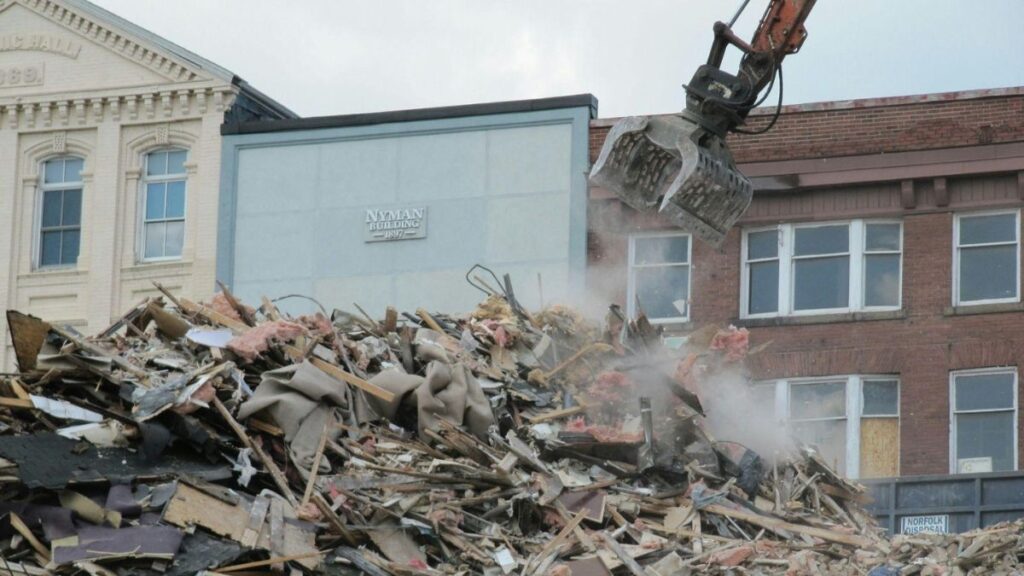- The right Earthmoving Attachments can significantly improve productivity by matching specific tools to job needs.
- Quick-hitch systems, tiltrotators, and multi-functional attachments offer significant time savings.
- Local equipment providers can help tailor attachment choices to your site’s conditions.
- Regular maintenance, operator training, and workflow planning maximize attachment performance.
No matter the size of your construction project, staying on schedule is always a top priority. Delays eat into budgets, frustrate clients, and create a domino effect across other parts of the job. And while most people think of efficiency in terms of manpower or machinery, one of the biggest time-savers often flies under the radar: the attachments you’re using.
The right earthmoving attachments can dramatically change how a site operates. Whether it’s cutting down on manual labor, speeding up trenching, or making material handling smoother, the right tool for the task can shave hours—if not days—off your schedule. It’s not just about getting the job done, but getting it done smarter.
In this article, we’ll explain why attachments have such a big impact, how to choose the right ones, and why working with flexible equipment options can save you time and money.
Why Attachments Matter in Earthmoving Efficiency
Every job site is different, but one thing remains constant: time is money. When it comes to earthmoving tasks, using unsuitable attachments can cause significant slowdowns. It’s like trying to eat soup with a fork—no matter how good your machinery is, the wrong tool will slow the whole process down.
Take trenching as an example. If you use a general-purpose bucket instead of a specialized trenching attachment, you’ll move more dirt than needed, do more backfilling later, and ultimately lose time. The same goes for grading, lifting, or even compacting. Attachments designed for specific tasks let your machines do more in fewer passes, with less strain on the equipment and the crew.
There’s also the added benefit of reducing wear and tear. A poorly matched attachment can push a machine harder than it’s meant to be pushed. Over time, that leads to breakdowns, repairs, and—you guessed it—more delays. Investing in (or renting) the right gear helps protect your equipment, schedule, and bottom line.
Ultimately, the smarter your attachments, the fewer surprises you’ll face in the field.
Finding the Right Fit for Your Project
Not every site requires the same setup. Soil conditions, job size, and even local regulations can influence the best attachments. That’s where having flexible access to equipment is handy. When you’re not locked into a fixed set of tools, you can adapt your setup to match the unique demands of each project.
Let’s say you’re prepping for a project requiring demolition and clean-up. You could haul in a bunch of separate machines—or you could look for a quick-hitch system paired with attachments like hydraulic breakers, grapples, and buckets ready to swap in and out in minutes. This setup doesn’t just streamline your workflow—it saves hours in the process.
That’s also where working with a local rental provider can be a game-changer. They know the terrain, understand the types of jobs that come through the region, and can help guide you toward smart choices that align with your workload. Whether you’re working in tight urban spaces or dealing with rocky, uneven ground, their insight can be incredibly valuable.
Turning to earthmoving attachments available for rent opens the door to tools you might not otherwise invest in, especially the highly specialized ones that only make sense for specific jobs. It’s a more flexible, cost-effective way to get exactly what you need, exactly when you need it.
Attachment Features That Save You Time
Once you’ve identified the right attachment types for your project, the next efficiency level is determined by the features built into those tools. Not all attachments are created equal, but some have time-saving design elements that can drastically streamline your crew’s work.
One of the biggest game changers is the quick-hitch or quick-coupler system. These allow operators to switch between attachments without stepping out of the cab, which can save serious time throughout a workday. No more waiting for extra hands or dragging out wrenches—just click, lock, and go. Over the course of a full job, those saved minutes start to add up.
Then there’s the rise of multi-functional attachments. Think buckets that can tilt, rotate, or grab. These tools let you do more without constantly swapping gear, especially in tight or complex work zones. A tiltrotator, for example, gives your excavator wrist-like movement, allowing you to dig or grade at angles that would otherwise require repositioning the entire machine. That alone can shave hours off site prep.
Some attachments also incorporate smart tech—like pressure sensors, automated leveling, or laser-guided grading—that enhances precision and reduces rework. Thus, you’re not just getting the job done faster; you’re doing it better the first time.
Ultimately, time savings often come from the small details. The easier an attachment is to install, the more intuitive it is to operate, and the more versatile it is on the job, the faster your workflow becomes.
Practical Tips for Getting the Most Out of Your Attachments
Even the best gear can underperform if it’s not handled properly. If you want to squeeze every drop of efficiency out of your attachments, you’ll need more than just the right tools—smart habits and a little planning.
First off, routine maintenance is non-negotiable. Dull cutting edges, loose fittings, or hydraulic leaks can slow down even the most capable attachment. Before every shift, take a few minutes to inspect each piece of equipment and handle minor fixes early. A little upfront effort helps avoid full-blown downtime later.
Operator training is another crucial piece of the puzzle. Someone who understands how to fully leverage a tilt bucket or hydraulic thumb can complete the same task in half the time as someone who is still figuring it out. Whether it’s formal training or just some in-house mentoring, getting your team comfortable with the tools pays off quickly.
Planning your workflow around your attachments also makes a noticeable difference. For example, grouping tasks that use the same attachment helps avoid unnecessary changeovers. Plan the schedule to minimise machine downtime if you need a breaker in the morning and a grading bucket in the afternoon.
Finally, don’t underestimate the value of storage and transport logistics. Keeping attachments secure, clean, and easy to access—especially on large or mobile sites—can save you time scrambling to find the right piece when needed.
Attachments don’t work magic on their own, but with a thoughtful approach, they become one of the most powerful tools in your efficiency toolkit.
Conclusion
The difference between a job that drags on and one that runs like clockwork often comes down to the gear you’re using. Earthmoving Attachments does the heavy lifting, but the attachments fine-tune your workflow and keep your crew moving efficiently. Choosing the right ones speeds up the work, protects your machinery, reduces manual labor, and limits costly delays.
Whether prepping for a big dig or juggling multiple job types in a single project, thinking strategically about attachments can unlock new levels of productivity. The most successful crews aren’t just well-equipped—they’re well-prepared. And with the right tools at your fingertips, you’re better positioned to finish faster, work smarter, and keep your job site running like a well-oiled machine.







